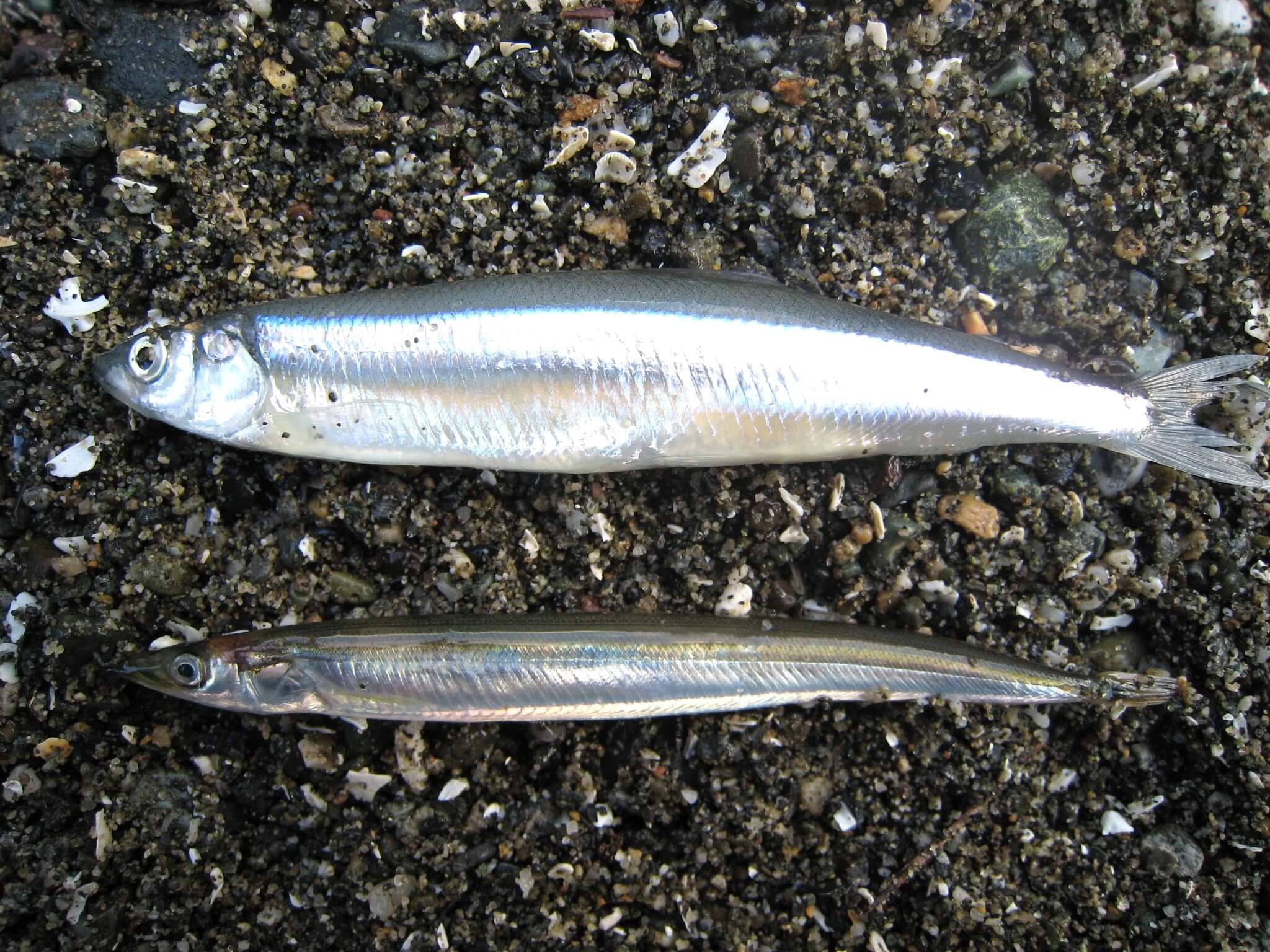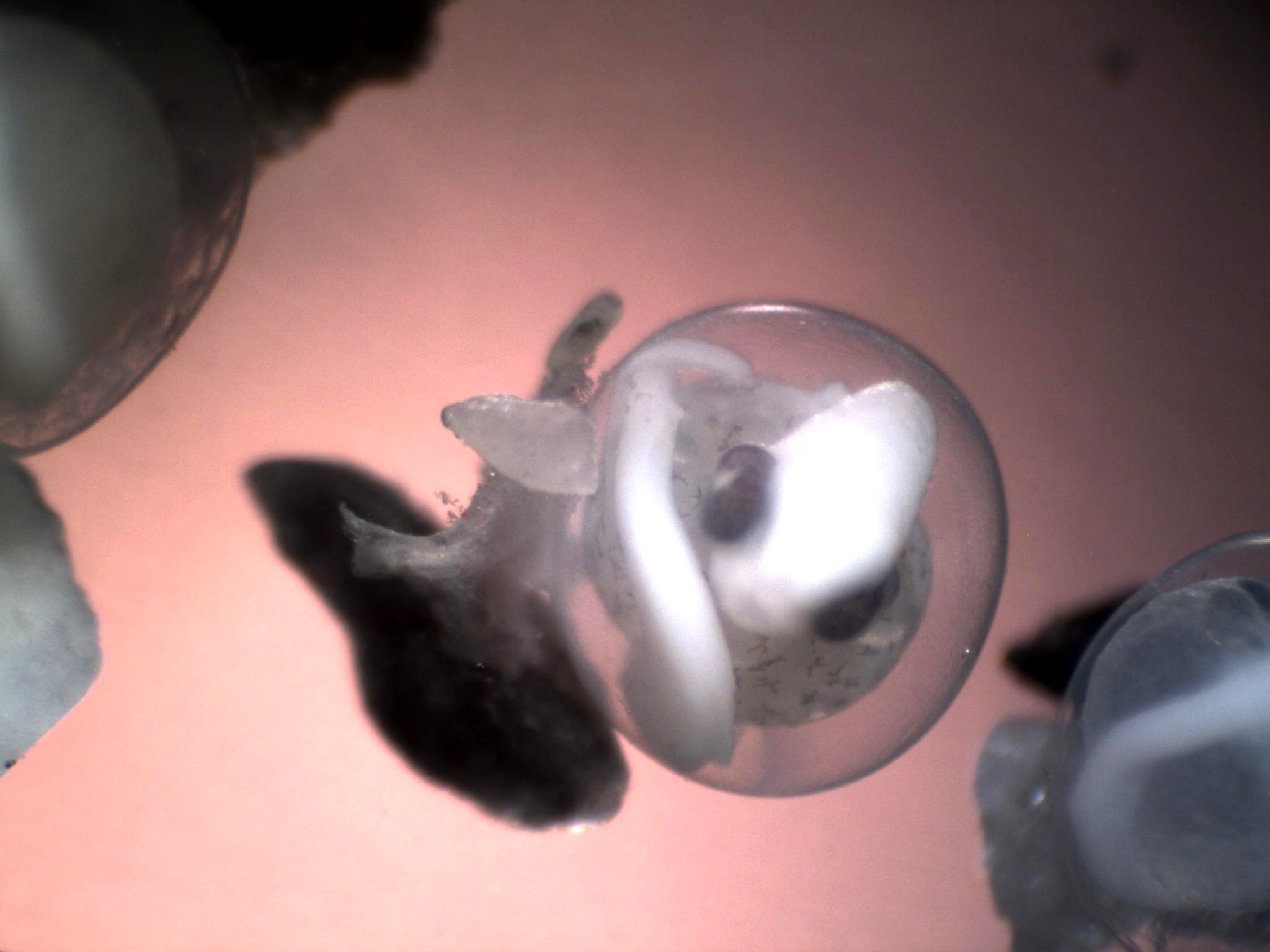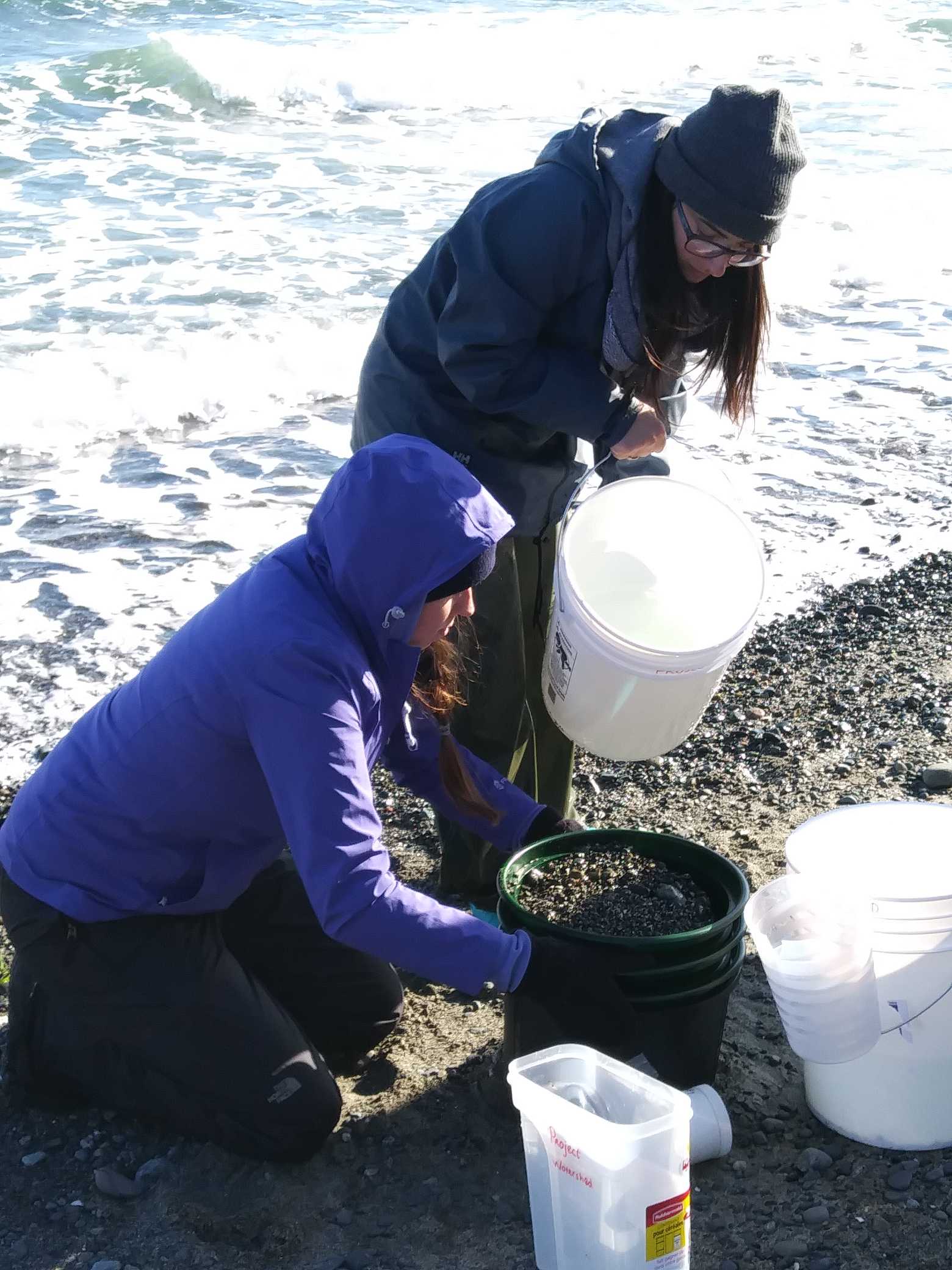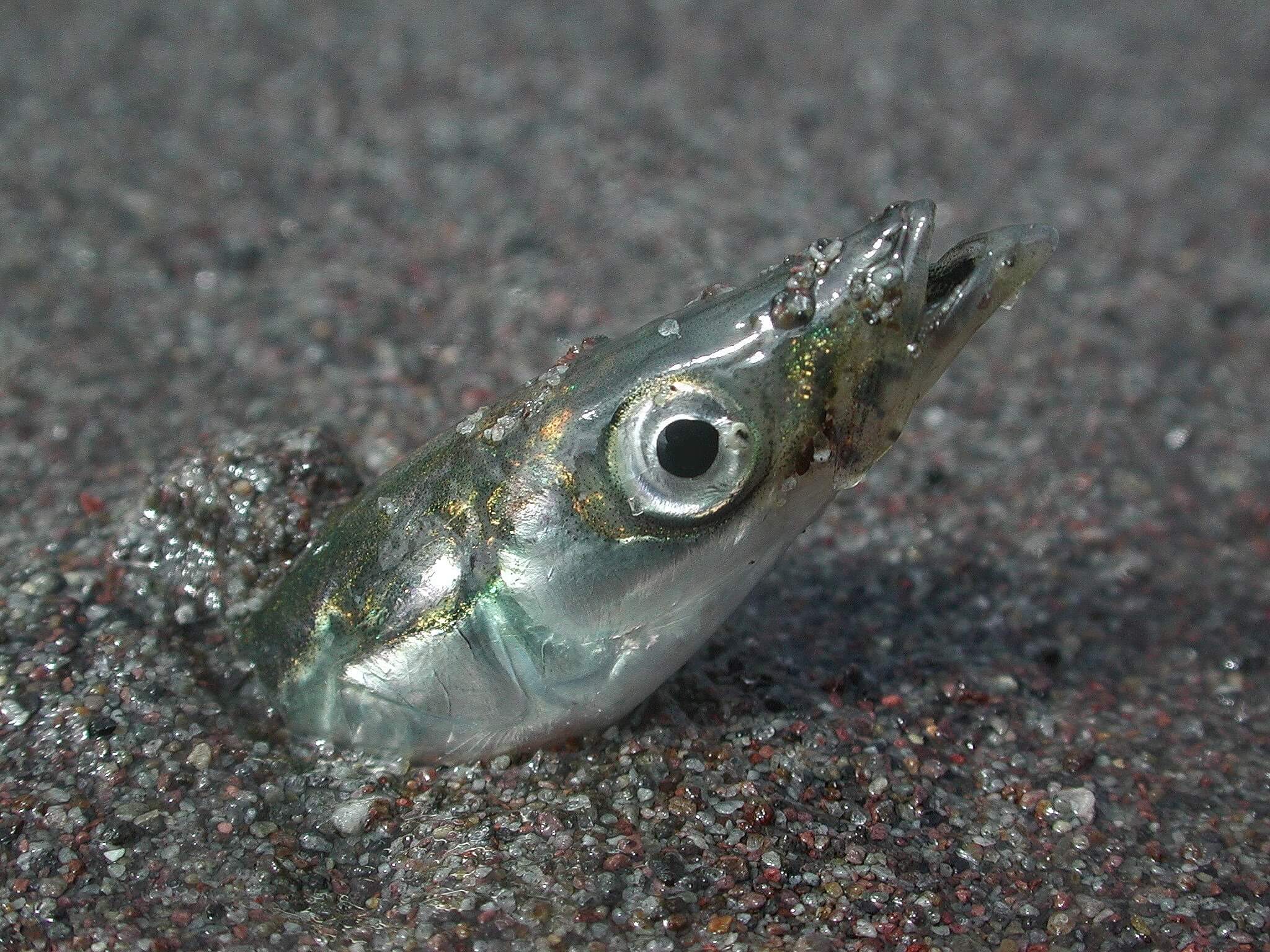Project Watershed Takes on Forage Fish Work
Forage fish species such as Pacific herring, Pacific sand lance, surf smelt, and northern anchovy are crucial to the health of marine ecosystems. Healthy forage fish populations are also key to supporting the conservation and recovery of Chinook salmon and other species at risk such as the marbled murrelet and southern resident killer whale. Forage fish have life cycles that involve movement and migration between several nearshore habitats during various life stages (e.g., intertidal spawning, subtidal burying and open-ocean foraging habitats). However, there is very little information on the status of key forage fish populations that salmon depend upon. This knowledge gap needs to be urgently filled to counter increased threats of forage fish habitat such as beach hardening, removal of shoreline marine riparian vegetation, marina developments etc…
More Forage Fish Info
Eggs detected! Our fellow forage fish surveyors from Peninsula Streams Society (Saanich Peninsula) detected eggs at one of their beaches! Preliminary reports suggest they may be surf smelt eggs. We will report back once we know more!
Breaking News! One of our volunteer groups from Cortez Island just reported finding Pacific Sand Lance eggs in their first outing!
Instructors Alana Vivani (standing) and Haley Tomlin (kneeling)
show participants how to sample for forage fish eggs at a recent workshop hosted by Project Watershed
Want to know more? Interested in volunteering to monitor beaches or look for eggs under the microscope?
The you can sign up to receive our “Forage Fish Flyer”. This weekly update will provide interesting facts about our forage fish friends, updates on our work and volunteer opportunities. Even if you have not participated in the training you can still come and help us look for forage fish eggs. If you have any questions, contact Bea (maps.projectwatershed@gmail.
This fall and winter Project Watershed will be working with citizen science volunteers to identify beaches where surf smelt and Pacific sand lance are spawning. These fish lay tiny eggs (around 0.5 mm in size) on pebble and sandy beaches just below the high-tide line in the intertidal zone. Last month we held two workshops to train local volunteers interested in helping out with this important work. The Pacific Salmon Foundation has provided some funding for us to purchase field equipment for this work.
Pacific sand lance poking out of the sediment.
Photo by Mandy Lindeberg, National Oceanic and Atmospheric Administration, Department of Commerce.
Fun Forage Fish Fact: The scientific name of Pacific Sand Lance is Ammodytes hexapterus. The name “ammodytes” is derived from the Greek words ammos, meaning “sand” and dutes meaning “burrower” or “diver.”
How can you help?
- Fill in the Local Ecological Knowledge Questionnaire – online using google forms or using this pdf
- Send photos of beaches where you have seen forage fish in the past
- Share local knowledge over casual conversation and send the stories to Project Watershed (student.projectwatershed@gmail.com)
- Call Virginia East – Project Watershed’s Forage Fish Field and Research Assistant: 250-703-2871
Who can help us?
- Community members and elders from First Nations communities across Vancouver Island
- Local persons involved with the fishing industry (past or present)
- Local residents – are there beaches you like to walk where you notice particular activities at various times of the year (i.e. bird sightings)?
- Anyone interested in sharing knowledge on forage fish is welcome to contribute to our ongoing collection of local forage fish knowledge!






